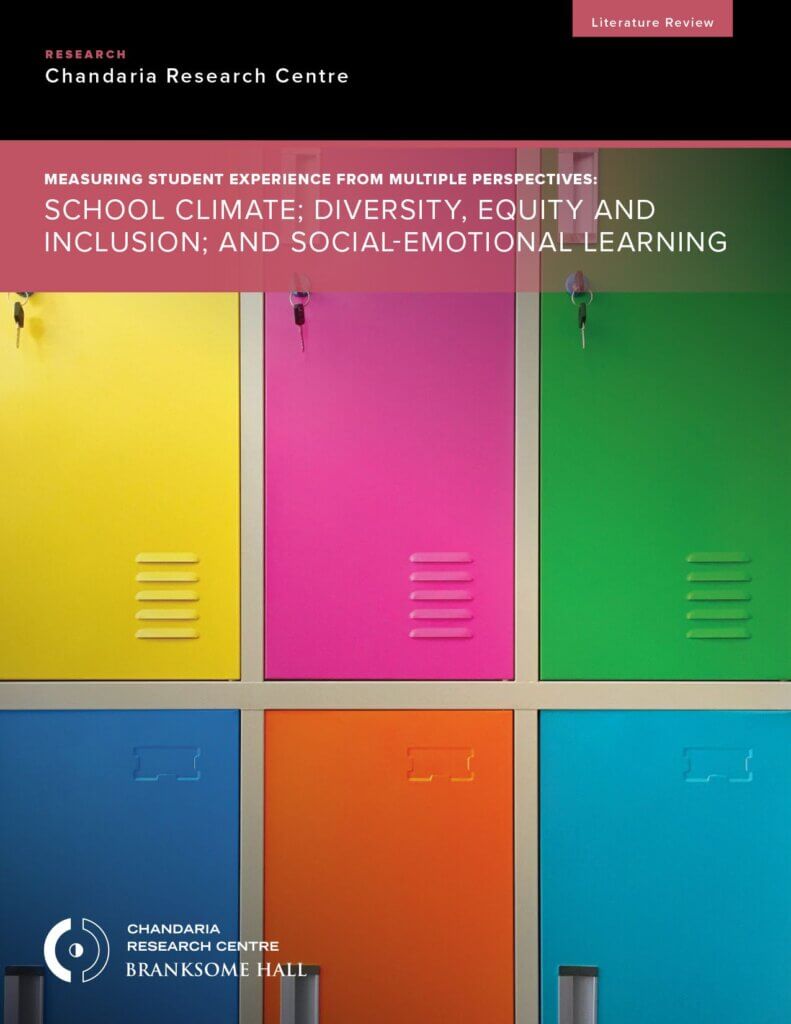Measuring Student Experience from Multiple Perspectives
Published On:
Written By: Chandaria Research Centre (CRC)

Measuring student experience from multiple perspectives: school climate; diversity, equity and inclusion; and social-emotional learning
Overview
Schools are systems that are microcosms of the world around us. They recreate structures, norms and beliefs that are widespread in society at large; this includes, among other things, reproducing systems of oppression (Donoghue, 2022). Schools have the potential to be transformative spaces that lead students of all identities (related to race, culture and ethnicity, gender, sexual orientation, ability and neurodiversity) to find their voice and thrive (Mitra, 2008).
Introduction
The sense of care, belonging and representation that diverse communities feel in a given school setting provide important information on how programs, policies and practices can be created or changed to help students flourish. As articulated by Zelinski and Villenas (2020), “school climate is comprised of the structural and relational elements that make up each school’s learning environment” (para. 4). In school climate research, insight into a school’s culture is gained by asking questions about sense of safety, fairness and relationships with adults and peers (Bradshaw et al., 2014).
An equity-minded school recognizes the power and value in analyzing school climate from different perspectives and identity markers (Voight et al., 2015). If we look at student experiences through an identity lens, we may begin to ask important questions about existing structures and systems that might make students feel unseen, unheard or uncared for. This examination also provides an opportunity for all school stakeholders (students, teachers, employees and parents) to work together to recognize where inequities exist in the school system and to identify what actions can be taken to dismantle them (Thapa et al., 2013).
School climate research can include surveys, observations and policy reviews. When this research is equity informed, it gets to the heart of the beliefs and realities that underlie a child’s experiences in an institution. Results can also unmask where racism, homophobia, classism and other forms of exclusion operate in the daily practices and organizational structures of a school.
